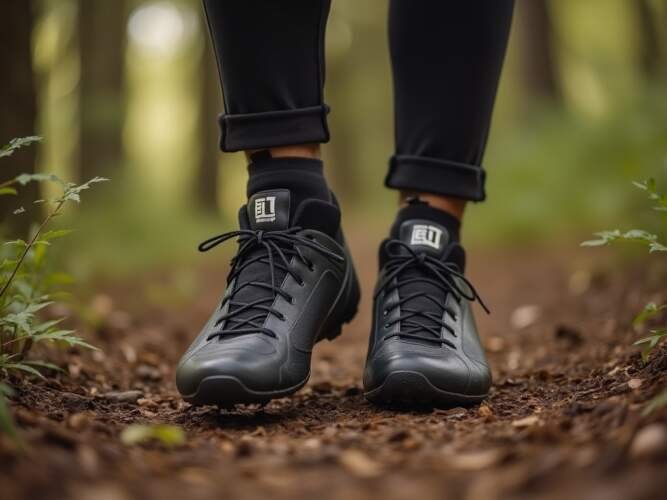Mountain biking is more than just a sport—it’s a lifestyle. But whether you’re tackling rocky descents or powering through muddy climbs, your gear can make or break your ride. And when it comes to gear, mountain biking shoes are often the unsung heroes. They connect you to your bike, transfer power efficiently, and keep your feet comfortable through hours of adventure.
In this guide, we’ll dive deep into the world of mountain biking shoes. You’ll learn about the different types, key features to look for, and answers to common questions. Let’s roll!
Why Mountain Biking Shoes Matter
Imagine hiking in flip-flops or running in dress shoes. Sounds uncomfortable, right? The same logic applies to mountain biking. Regular sneakers lack the stiffness, grip, and durability needed for off-road trails. Here’s why dedicated mountain biking shoes are worth the investment:
- Power Transfer: Stiff soles maximize efficiency with every pedal stroke.
- Grip: Specialized treads keep your feet planted on flat pedals or clipped into clipless systems.
- Protection: Reinforced toes and waterproof materials shield against rocks, mud, and weather.
- Comfort: Breathable designs and ergonomic support prevent fatigue on long rides.
Types of Mountain Biking Shoes
1. Clipless Shoes (SPD-Compatible)
Clipless shoes use a cleat system that “clips” into compatible pedals, creating a secure connection. Popular among cross-country and endurance riders, they offer unmatched pedaling efficiency.
Pros:
- Improved power transfer
- Better control on technical terrain
- Lightweight design
Cons:
- Learning curve for clipping in/out
- Less walkability
Best for: Riders prioritizing speed and efficiency.
2. Flat Pedal Shoes
Flat pedal shoes feature grippy rubber soles designed to stick to flat pedals. They’re ideal for downhill, freeride, or beginners who want quick foot placement.
Pros:
- Easy to use (no cleats!)
- Versatile for hiking sections
- Durable and rugged
Cons:
- Slightly less efficient than clipless
- Can slip in wet conditions
Best for: Trail riders and downhill enthusiasts.
Key Features to Look For
Stiffness Matters
A stiff sole (rated on a scale of 1-10) ensures efficient power transfer. Cross-country riders may prefer a 8/10 stiffness, while trail riders might opt for 6/10 for added flexibility.
Tread Pattern
Look for aggressive lug patterns for flat shoes or recessed cleat areas for clipless. Brands like Five Ten use stealth rubber for legendary grip.
Closure Systems
- Boa Dials: Precise, micro-adjustable fit (common in high-end shoes).
- Velcro Straps: Simple and reliable.
- Laces: Lightweight but can snag on debris.
Weather Resistance
Waterproof membranes like Gore-Tex keep feet dry, while mesh panels enhance breathability for summer rides.
How to Choose the Right Mountain Biking Shoes
Step 1: Match Your Pedals
Clipless shoes require SPD-compatible pedals. Flat shoes work best with wide, pinned pedals like Race Face Chester.
Step 2: Consider Your Riding Style
- Cross-Country: Lightweight, stiff clipless shoes.
- Enduro/Downhill: Durable flat shoes with ankle protection.
- All-Mountain: Hybrid options offering a balance of stiffness and walkability.
Step 3: Test the Fit
Always try shoes with cycling socks. Your toes should have room to wiggle, and your heel shouldn’t lift.
Top Mountain Biking Shoe Brands
- Shimano: Renowned for durable clipless shoes like the SH-MT901.
- Five Ten: The gold standard for flat pedal grip (check out the Freerider Pro).
- Giro: Combines innovation with style (Check the Giro Jacket BOA).
- Specialized: Offers high-performance options like the S-Works Recon.
Maintaining Your Mountain Biking Shoes
- Clean After Rides: Brush off mud and use a damp cloth.
- Air Dry: Never place shoes near direct heat.
- Replace Cleats: Worn cleats reduce clipping efficiency.
FAQs About Mountain Biking Shoes
Q: Can I use hiking shoes for mountain biking?
A: While possible, hiking shoes lack the stiffness and pedal grip needed for optimal performance.
Q: How often should I replace my shoes?
A: Every 2-3 years, or when soles show significant wear or lose stiffness.
Q: Are clipless shoes dangerous?
A: There’s a learning curve, but once mastered, they’re safe and efficient. Practice clipping in/out on grass first!
Ready to Hit the Trails?
Choosing the right mountain biking shoes can transform your ride from exhausting to exhilarating. Whether you’re team clipless or a flat pedal fanatic, prioritize fit, function, and durability.
Got questions? Drop a comment below or share your favorite shoe brand! And don’t forget to check out our guide to Best Mountain Bikes of 2023 for more trail-ready tips.
Must Read: Ed Sheeran Details the Lovestruck Jitters in Sweet New Single
